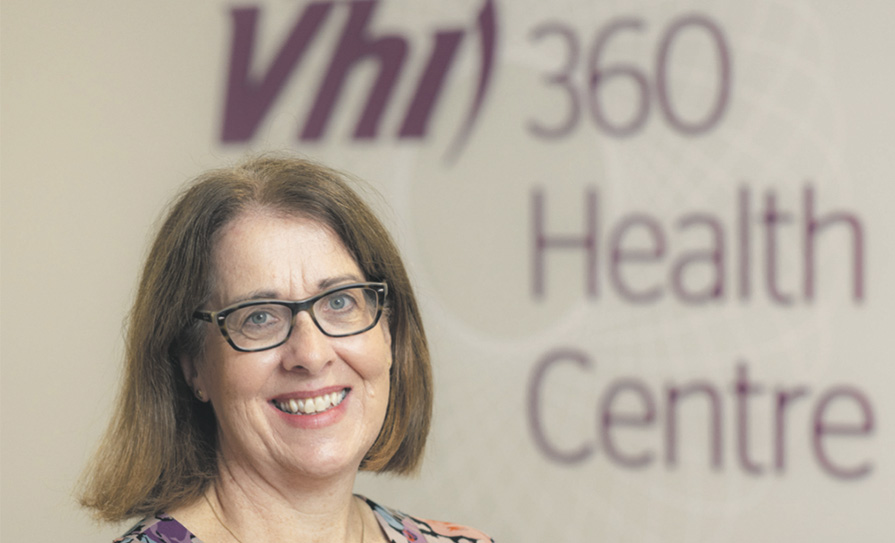In 5-6 October in the Convention Centre Dublin a dedicated two-day meeting hosted by BMS/Pfizer on stroke prevention in non-valvular atrial fibrillation (NVAF) and the prevention and treatment of venous thromboembolism (VTE) will take place. The event will feature presentations from leading multidisciplinary international experts from Europe and Canada, as well as local expert Dr Rónán Collins, about the latest clinical advances in anticoagulation and practical guidance on how to apply this knowledge in patient practice.
In an interview with the <strong><em>Medical Independent</em></strong> (<strong><em>MI</em></strong>), Dr Collins stressed the need to increase awareness of atrial fibrillation, and its connection to stroke among both clinicians and the general public and the best ways to clinically manage it.
<img src=”../attachments/1c414508-3430-4864-b76f-f320457946cd.JPG” alt=”” />
<strong>Dr Ronan Collins</strong>
“Atrial fibrillation is the commonest cardiac arrhythmia and affects about 5 per cent of people over the age of 60, and about 10 per cent of people over the age of 75, so therefore it is a very common condition and it is a growing problem because of our demography in Western Europe and also particularly in Ireland. Because of the huge risk factor for stroke, particularly in Ireland where about 35 per cent, a bit over one-in-three, strokes are caused by atrial fibrillation, it is crucially important in any stroke strategy that we pay attention to prevention.”
Dr Collins was involved in the development of the newly revised European Heart Rhythm Association (a branch of the European Society of Cardiology (ESC)) <em>Practical Guide on the use of non-vitamin K antagonist oral anticoagulants in patients with atrial fibrillation</em> (2018).
This Practical Guide, like its predecessors from 2013 and 2015, supplements ESC guidelines on how to use non-vitamin K antagonist (VKA) oral anticoagulants (NOACs) in specific clinical situations for stroke prevention in patients with atrial fibrillation (available at <em>www.NOACforAF.eu</em>).
“We extended it this year beyond the traditional remit of just atrial fibrillation in general to consider special populations with atrial fibrillation, for example, those who are frail and quite old who may be quite prone to falling, they may have co-existent dementia, have age-related kidney issues, have lower body weight, etc. So for those reasons it was important that the document focused on special populations this year. It is within that context, as one of the authors of the guidelines that I will be speaking at this week’s meeting about optimising treatment management, with particular reference to older people, frail people, people who have just had a stroke and the importance of multidisciplinary working as well,” he explained.
Dr Collins stressed that a multidisciplinary approach to atrial fibrillation “is a critical point” that has been “an ESC recommendation for the last two years”.
“We are probably one of the few places in Europe that have an interdisciplinary atrial fibrillation clinic. In Tallaght Hospital our atrial fibrillation clinic is a joint effort between cardiology, geriatric and stroke medicine, clinical nurse specialists and pharmacy. We think that is the right way forward to deal with atrial fibrillation.”
<h3 class=”subheadMIstyles”>Awareness</h3>
Awareness of atrial fibrillation among the general population is poor in Ireland. Dr Collins noted the Irish Heart Foundation has run campaigns to try to address this but awareness still remains quite low; according to the most recent data less than 30 per cent of surveyed people in Ireland had heard of the condition. “Which is amazing as it is so common. The awareness is slightly higher in older people, which is good as older people are more likely to have it and it is slightly higher in higher socio-economic groups,” he said.
In addition, in people who have heard of atrial fibrillation most do not realise the connection with stroke, which is quite worrying, Dr Collins commented.
“Public awareness is low and we know it is even low in people who have atrial fibrillation; we know from a paper from Birmingham on people attending an atrial fibrillation clinic that less than half of them knew what it is. So if that was in a specialist clinic you can imagine what it [awareness] is like among the general public. Basically we know that only 25 per cent of people know anything about atrial fibrillation and only half of those are aware it is associated with a risk of stroke. So there is a lot to be done. I don’t think Ireland is very different from other European countries. There is a taskforce to get European Parliament engagement on this as a public health issue but we have a lot to do.”
<h3 class=”subheadMIstyles”>Anticoagulation</h3>
In relation to anticoagulation of those who are at risk of stroke, Dr Collins said that while more people are being treated, there is still much unmet need. He noted that the use of NOACs has increased dramatically in the last five years in Ireland and that it is now well-established that warfarin is no longer the gold standard of care with the newer NOACs being the first choice for anticoagulation as per the ESC guidelines.
“To be fair I think we are doing much better in this regard. If you look at the pharmacoeconomic data there has been a huge increase in the use of NOACs. Therefore, there are a lot more prescriptions being written… Clearly these drugs cost and I’m not saying pharmacoeconomics aren’t important, but stroke is our third leading cause of death and our leading cause of acquired neurological disability. That’s a fact and atrial fibrillation is one of the major causes of stroke in Ireland and in Western Europe and that is also a fact. So therefore the pharmacoeconomics have to be set in the context of what the drugs are actually doing. The country has a lot of expenditure on drugs and it is important that we police it, but these are effective drugs. Sometimes I do wonder when it comes down to discussing drugs, for example, cancer, because cancer can be such an emotive issue, the pharmacoeconomics might get looked at, but it doesn’t get the same drilling as a preventative drug, so paring atrial fibrillation back to its core message: It is very common, the consequences of atrial fibrillation can be very severe. Atrial fibrillation can be detected before it causes any major health problems and the health problems can be prevented by effective intervention. The effective intervention is relatively cheap and relatively well-tolerated and there is a huge economic gain in preventing stroke to the health service and a huge personal gain in preventing stroke for people who have suffered one.”
<h3 class=”subheadMIstyles”>Screening</h3>
Dr Collins pointed out that the World Health Organisation (WHO) criteria for screening programmes is based on the 1968 Wilson and Jungner criteria that if “a condition is common, that it is easily detectable by an acceptable means, that if you do not detect it, it causes a major health problem, that if you do detect it you can intervene to prevent that major health problem and that it is cost-effective, and atrial fibrillation ticks all these boxes”.
“This is something that causes one-in-three strokes in Ireland. And stroke is our third leading cause of death and leading cause of adult acquired disability so I think atrial fibrillation is a massive public problem.”
He commented that diseases like breast cancer “do not affect 5 per cent of people over the age of 60 or 10 per cent of people over the age of 70, but we have screening programmes. And I’m not saying we shouldn’t have screening programmes for that; that’s not the point I’m making. The point I’m making is that atrial fibrillation is a very serious problem but because it is not directly associated with something with the same emotive or terrifying understanding of cancer [it is overlooked]”.
“So there are other important things we should be screening for and atrial fibrillation is one of them. But in order to have an effective screening programme you must have public knowledge of the issue as well, so that is the starting point. And then we must get engagement with the HSE to look at this for screening. I have to say in Ireland we did a health technology assessment (HTA) of pulse screening [in a general practice setting] under Dr Breda Smyth [Consultant in Public Health, Department of Public Health Galway, HSE Health and Wellbeing Division] in the West of Ireland and the Dáil has approved the pulse check. It is not a comprehensive screening programme, but it has been approved by the HTA, by the Department of Health to be included in the health programme and it is probably part of the ongoing GP contract negotiations.”
However, Dr Collins reiterated that the medical community must further collaborate to raise awareness of the importance of atrial fibrillation. “We have to do our job better, we have to work out a way as to how we get this message across, how do we get people to understand. Once you get public engagement the rest of it tends to fall into place. If you don’t have public engagement you don’t have anything.”
Coming back to this week’s meeting, Dr Collins expressed his excitement at the “world class speakers” who will be giving presentations, including Prof Stefan H Hohnloser, Professor of Medicine and Cardiology at the Johann Wolfgang Goethe University in Frankfurt, Germany, where he is the Head of the Department of Electrophysiology; and Prof Giancarlo Agnelli, Professor of Internal Medicine and Director of the Department of Internal, CV Medicine and Stroke at the Perugia University Hospital, Italy. “They are at the top of their game. It would be hard to get a group of people with such expertise in one room as is being brought to Ireland for this meeting.”
<p class=”MCQsanswersallotherlinesMIstyles”><em>A full exclusive meeting report from the event will appear in a future edition of</em> <strong><em>MI</em></strong>.













Leave a Reply
You must be logged in to post a comment.